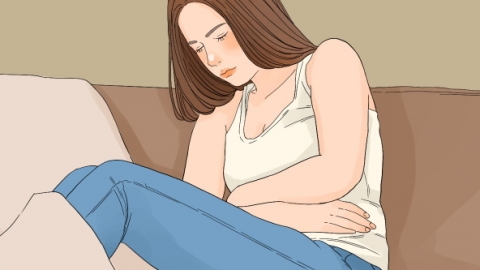What causes lower back and knee weakness in a 40-year-old woman?
Generally,腰膝酸软 (soreness and weakness in the lower back and knees) in a 40-year-old woman may be caused by overexertion, declining estrogen levels, lumbar muscle strain, lumbar disc herniation, or osteoporosis. It is recommended to seek medical attention promptly, identify the underlying cause, and receive appropriate treatment under a doctor's guidance. Specific causes are analyzed as follows:

1. Overexertion: Long-term household chores, prolonged sitting or standing can keep the muscles in the lower back and knee joints in a constant state of tension, leading to soreness and discomfort. Reduce heavy physical labor, avoid maintaining the same posture for extended periods, take a 5–10 minute break every hour to move around, and perform gentle stretching exercises for the lower back and legs to relieve muscle fatigue.
2. Declining Estrogen Levels: After age 40, women experience gradual ovarian decline and reduced estrogen production, which weakens bone and muscle support, resulting in soreness and weakness in the lower back and knees. Maintain a regular sleep schedule, avoid staying up late, and include soy products and dairy in the diet to supplement calcium and plant-based estrogens.
3. Lumbar Muscle Strain: Repeated pulling or injury to the lower back muscles leads to chronic inflammation, causing persistent soreness and pain in the lower back that worsens with exertion. Patients may use medications such as celecoxib capsules, diclofenac sodium sustained-release tablets, or ibuprofen sustained-release capsules as directed by a physician. Applying heat therapy and massage to the lower back can also improve local blood circulation.
4. Lumbar Disc Herniation: Degeneration and protrusion of the intervertebral discs compress nerve roots, causing lower back soreness that radiates to the legs, often accompanied by numbness. Under medical supervision, medications such as mecobalamin tablets, vitamin B1 tablets, or loxoprofen sodium dispersible tablets may be used to nourish nerves and reduce inflammation.
5. Osteoporosis: Reduced estrogen levels accelerate bone loss and decrease bone density, leading to lower back and knee weakness and increasing the risk of fractures. Patients should take medications such as calcium carbonate D3 tablets, alendronate sodium tablets, or calcitriol soft capsules as prescribed to supplement calcium and inhibit bone resorption.
In daily life, choose comfortable footwear and avoid high heels, which increase stress on the knee joints. Regular bone density screenings are recommended to monitor skeletal health. Maintaining a balanced diet and engaging in appropriate exercise can help reduce episodes of lower back and knee discomfort and support overall physical function.









